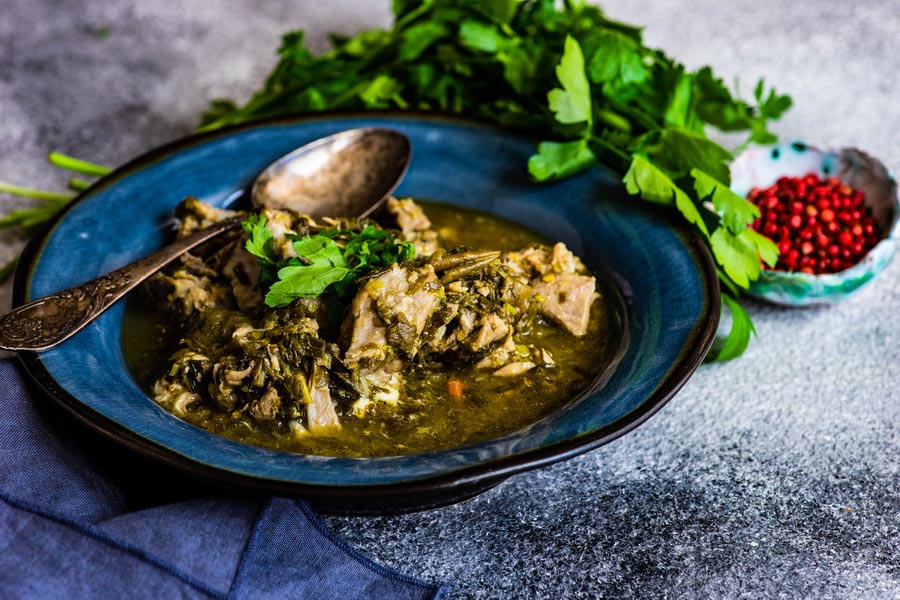Chakapuli, Traditional Georgian Dishes

Chakapuli, an aromatic Georgian dish made from young lamb and the first spring herbs, symbolizes the arrival of warmth and spring. It is usually prepared between May and mid-summer when cilantro, parsley and tarragon are in season and the tkemali berries have not yet fully ripened. The dish is comprised of delicate, melt-in-your-mouth chunks of meat and finely chopped herbs stewed in a sauce of hot pepper, garlic and dry white wine - a heavenly combination which yields a rich and slightly sour taste.
Chakapuli is an important food in Georgia for spring church holidays such as Easter and St. George's Day. On these days believers spend much time in nature as they go to cemeteries and visit holy places. Along with these largely outdoor activities, it only seems natural to cook a large pot of chakapuli over an open fire, just as this distinctly Georgian recipe was prepared in times past. While the dish can also be cooked at home and at any season of the year, the ingredients are most readily found in spring and the taste of campfire chakapuli simply cannot be beat.
To follow a classic chakapuli recipe, you first need to slice the meat into medium-sized chunks (while lamb chakapuli is the most traditional, you can also make this dish with veal). Finely chop up moderate portions of garlic, hot green peppers, green onions, tarragon, cilantro, parsley and mint. Stew all of the ingredients together over low heat for 2.5-3 hours. As it stews, some butter and a little dry white wine should be added. To maintain an optimal level of liquid, 2-3 tablespoons of water may need to be periodically added to the pot.
When served, the consistency of chakapuli should resemble a stew. This dish pairs excellently with fresh bread and dry white wine.

